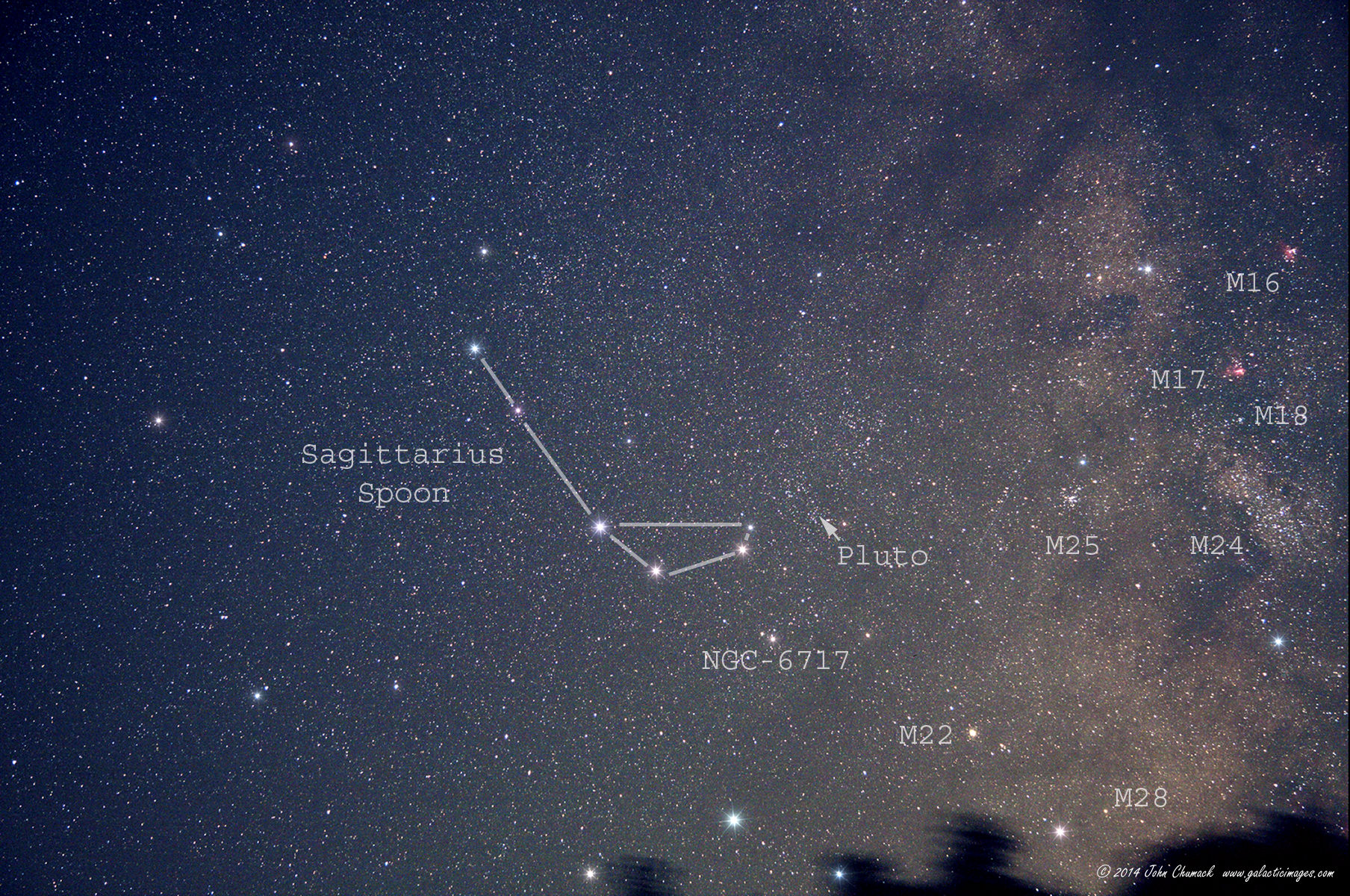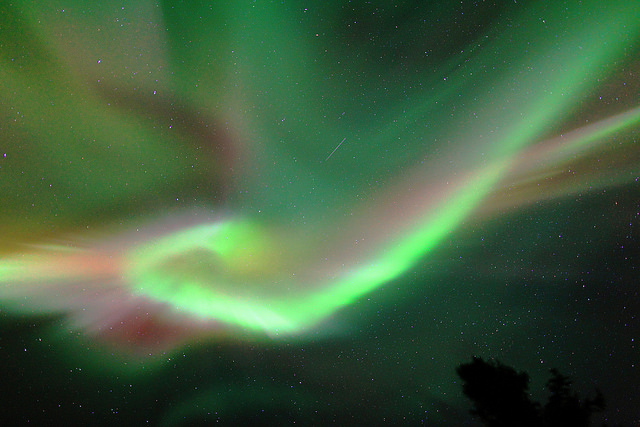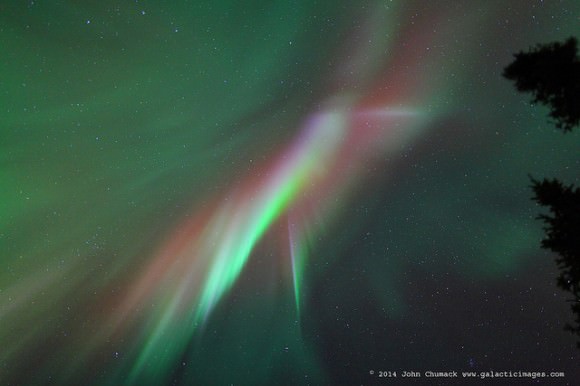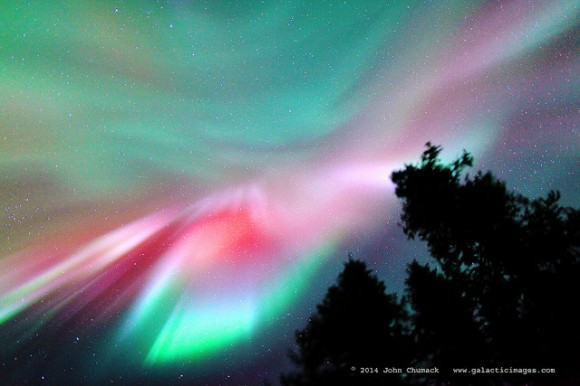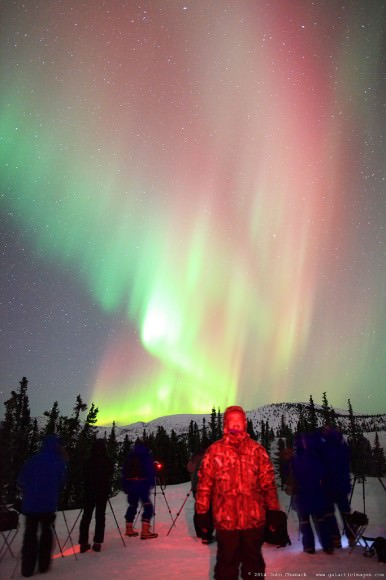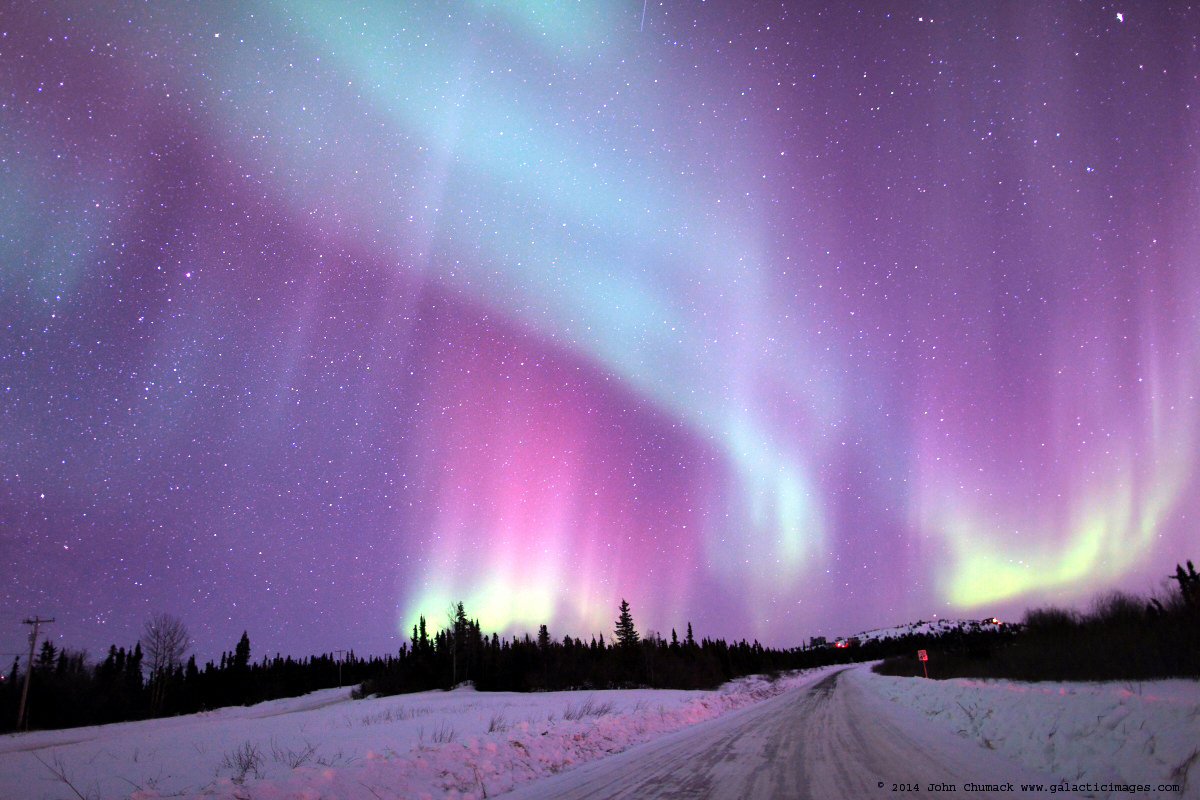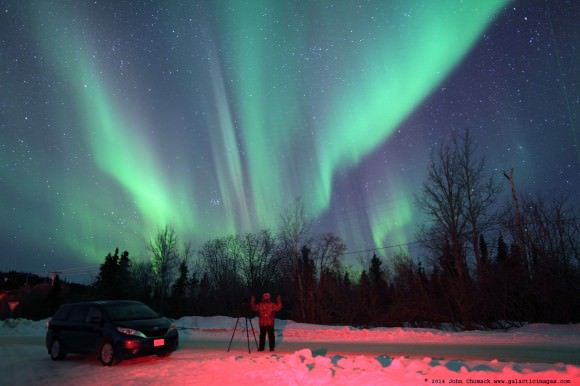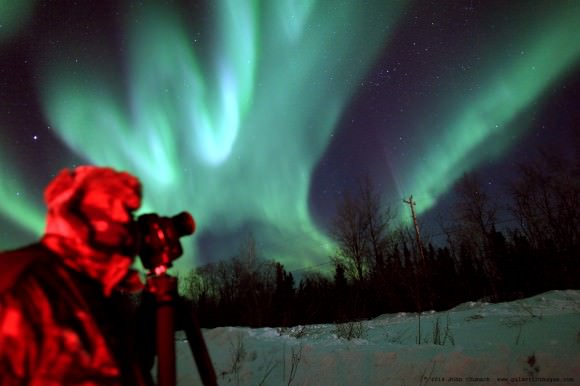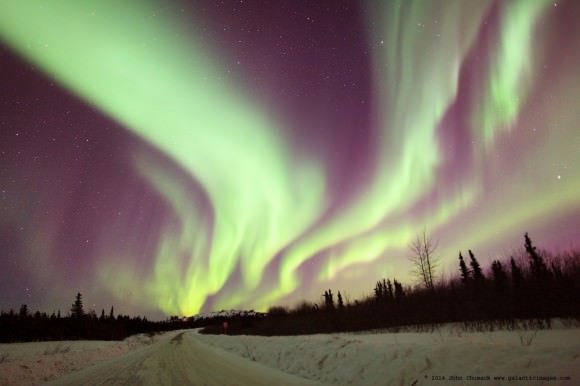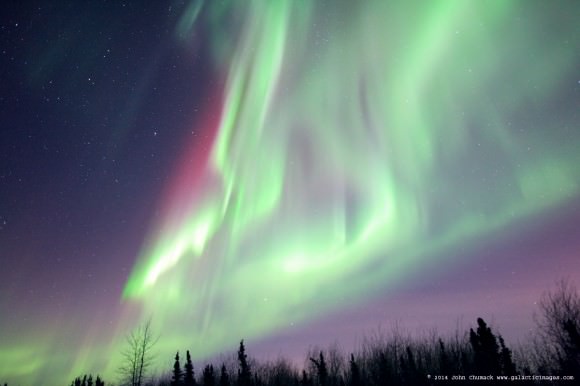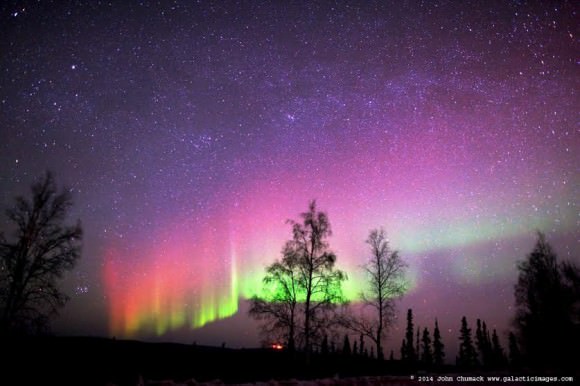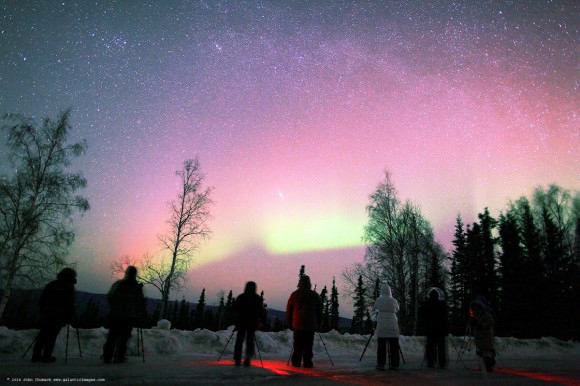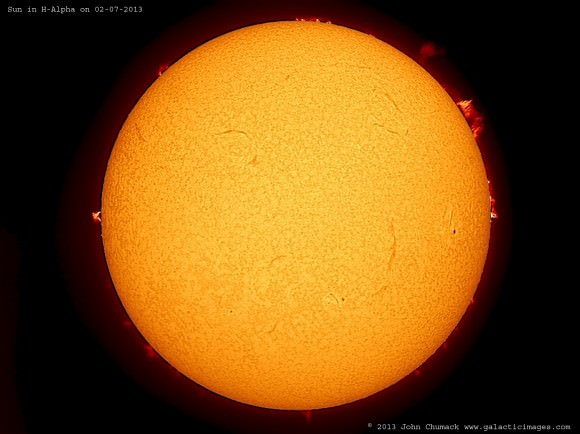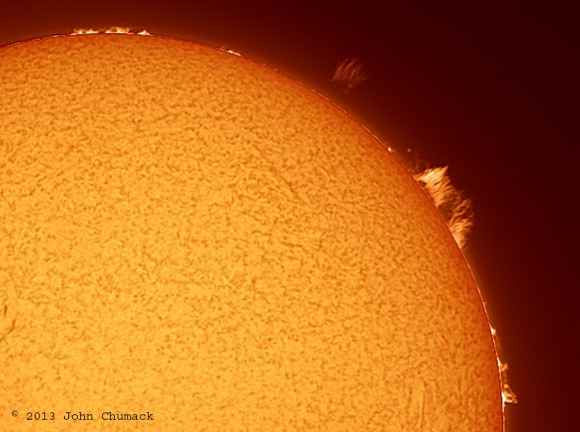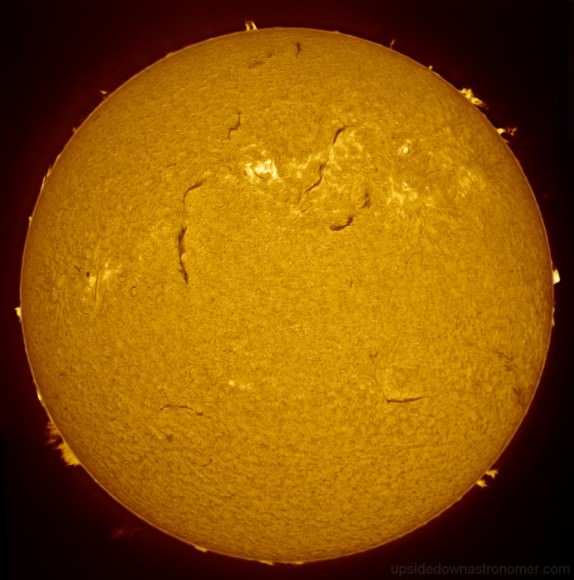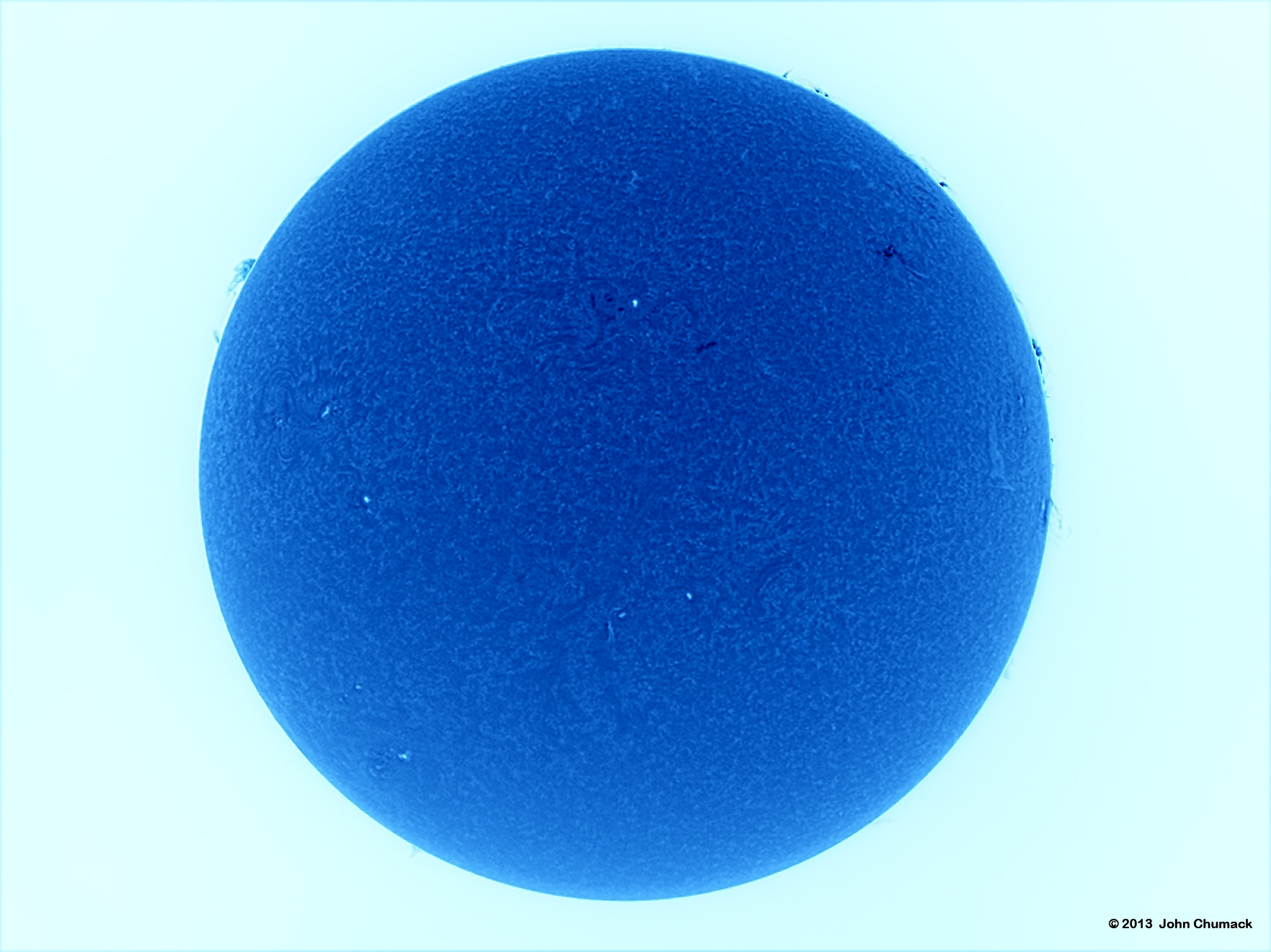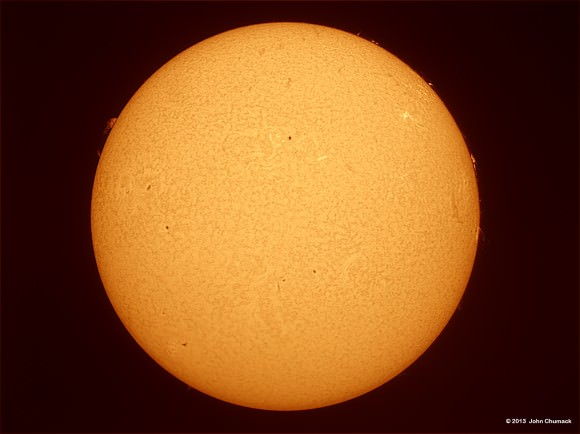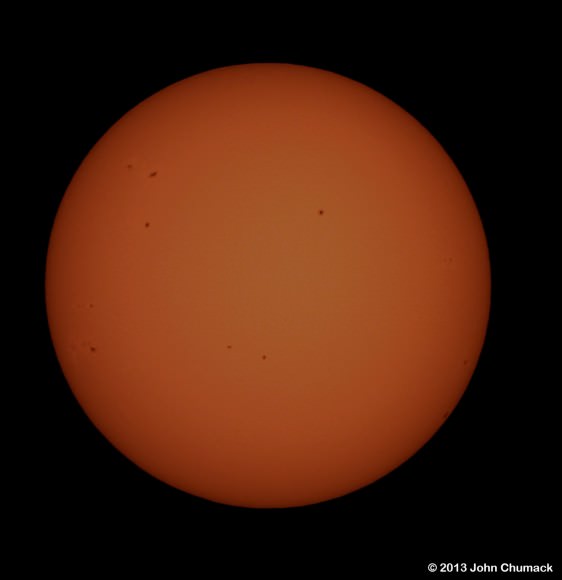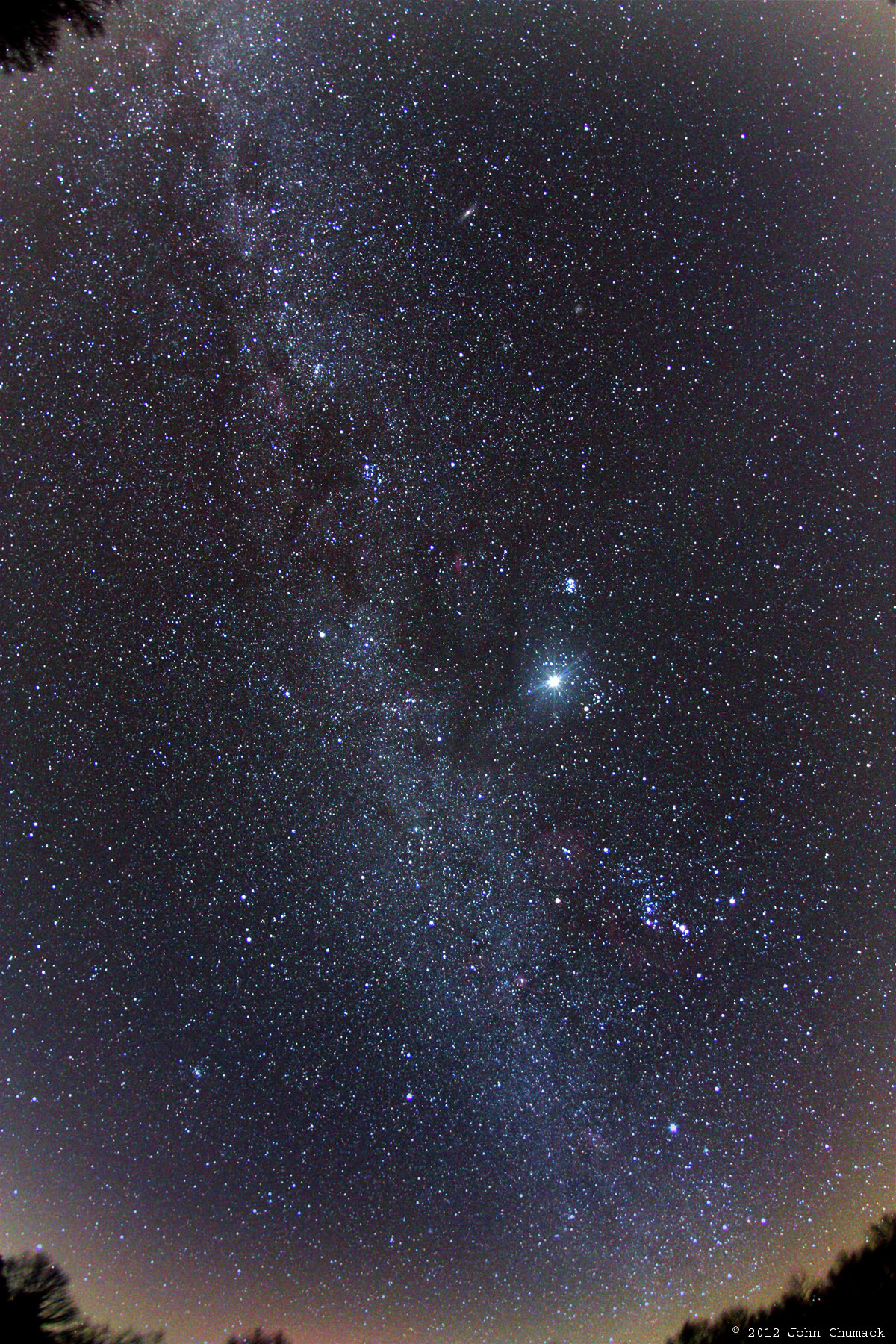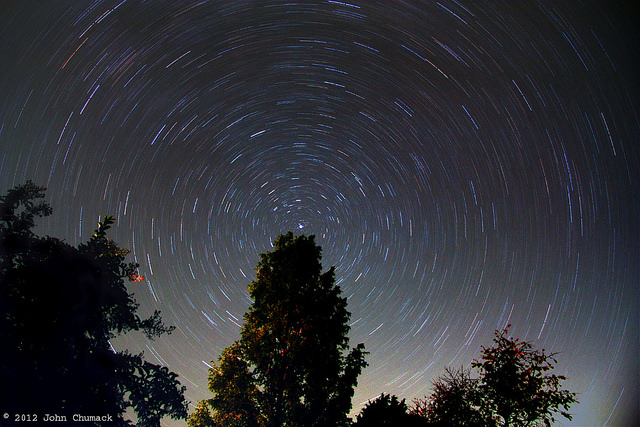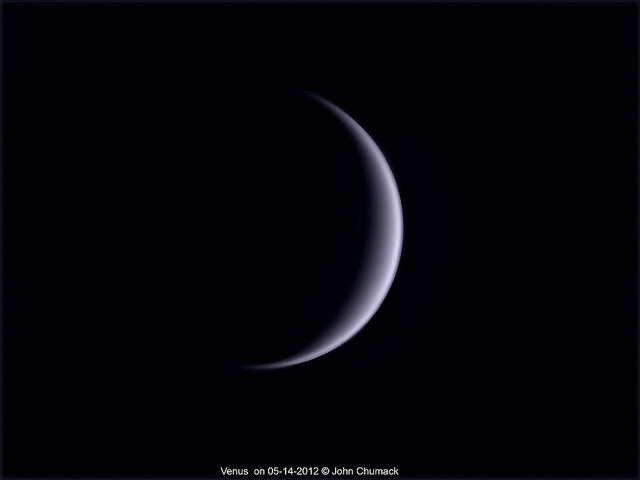Last week, we encouraged those of you with a decent sized backyard telescope (and a little patience) to try and spot tiny dwarf planet Pluto, which was at opposition over this past weekend.
One of our favorite astrophotographers, John Chumack, did just that using the “Sagittarius Spoon” to zero-in on Pluto’s location.
“Most astronomers are familiar with the Great Tea Pot of Sagittarius, but just above the Teapot’s Handle is the Sagittarius Spoon!” John said via email. His annotated image, above, shows the spoon and the arrow points to Pluto.
See a non-annotated version, below, and try to also spot some very familiar deep sky objects in this field of view:
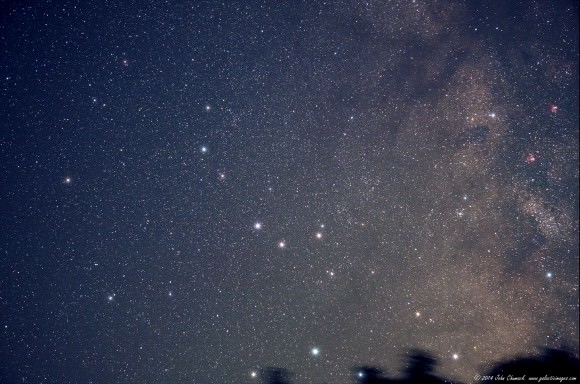
Can you see:
Globular Clusters M22, M28, NGC-6717
Open Star Clusters M25, M18
Emission Nebulae M17 The Swan or Omega Nebula & M16 The Eagle Nebula
M24 The Sagittarius Star Cloud, (also awesome in binoculars, John says)
John used a modified Canon 40D DSLR & 50mm lens @F5.6, ISO 1600 for a Single 4 minute exposure while tracking on a CG-4 Mount. And friends from Dexter, Iowa provided the view!
Update:
Larry McNish from the Calgary Centre of the Royal Astronomical Society of Canada also sent in two images of Pluto at opposition. All the details are on the images, but they emphasize just how difficult capturing Pluto can be:
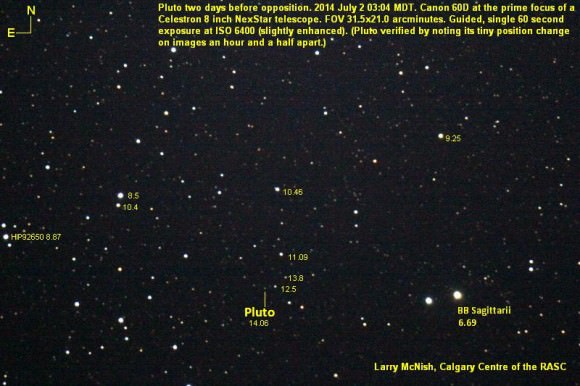
Royal Astronomical Society of Canada.
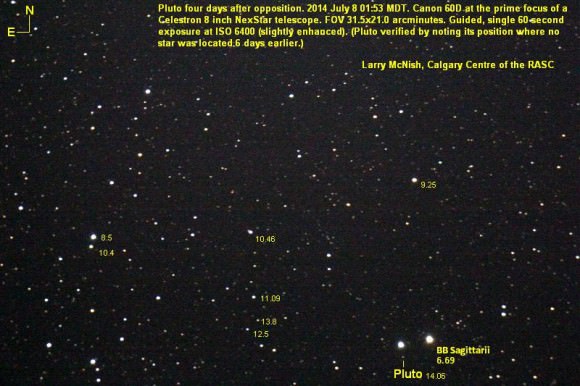
Royal Astronomical Society of Canada.
See David Dickinson’s great tips on how to spot Pluto for yourself here.
Want to get your astrophoto featured on Universe Today? Join our Flickr group or send us your images by email (this means you’re giving us permission to post them). Please explain what’s in the picture, when you took it, the equipment you used, etc.

